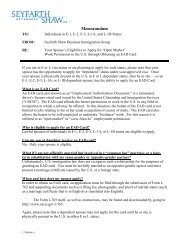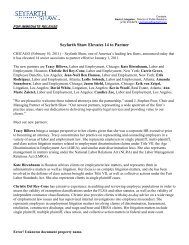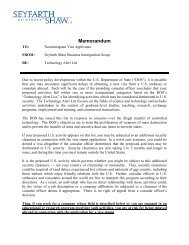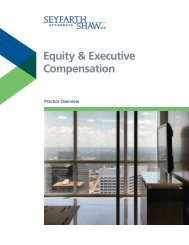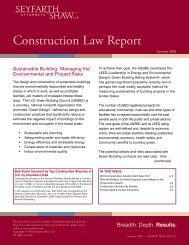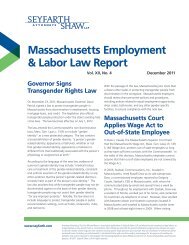Litigating California Wage & Hour and Labor Code Class Actions
Litigating California Wage & Hour and Labor Code Class Actions
Litigating California Wage & Hour and Labor Code Class Actions
You also want an ePaper? Increase the reach of your titles
YUMPU automatically turns print PDFs into web optimized ePapers that Google loves.
For example, in particular industries where there is a transient workforce, it is common for<br />
only about one quarter of the class members to make claims—either because they do not<br />
receive notice or because the value of the individual settlement amounts is too low to<br />
attract their attention. When a small percentage of the class submits claims in a<br />
reversionary settlement, it may actually result in class counsel receiving significantly more<br />
money than the class as a whole. For example, in connection with a settlement of one<br />
million dollars, if class counsel received thirty percent, that would leave no more than<br />
$700,000 for the class (actually less, because settlement administration costs are typically<br />
paid out of the gross settlement). If the class claims only 25% of the amount set aside for<br />
claims, then the class would receive no more than $175,000 versus the $300,000 class<br />
counsel would be slated to receive. While this arrangement could be defended on the<br />
ground that class counsel secured a potential one million dollar settlement, courts have<br />
looked unfavorably on large payouts to class counsel as compared to the payment received<br />
by the class.<br />
One way courts can address this inequity is simply to cut the attorney’s fee <strong>and</strong> distribute<br />
the difference to those members of the class who made claims. In the above example, if<br />
class counsel’s fee was reduced to 15% of the gross, then it would result in the lawyers<br />
obtaining $150,000, <strong>and</strong> the class receiving $325,000, an effective contingency of 31%. Of<br />
course, this result is at odds with what class counsel negotiated, so a routine reduction in<br />
fees would substantially reduce the willingness of plaintiff’s counsel to agree to<br />
reversionary settlements.<br />
Courts could also take greater pains to ensure that class members underst<strong>and</strong> that they<br />
have claims <strong>and</strong> make an informed decision whether to make claims. Courts could extend<br />
the notice period, could order that the claims administrator send multiple reminders of the<br />
need to return a claim form, or even that the administrator (or class counsel) actually<br />
telephone class members <strong>and</strong> encourage them either to make claims or opt out. While<br />
such steps make settlement administration more expensive, they serve the goal of<br />
minimizing the number of situations where class members unwittingly receive no money<br />
under a settlement as a result of simple ignorance.<br />
Rather than address the problem of low claims rates through better notice or adjustment of<br />
the attorney’s fee, many courts have simply refused to approve reversionary settlements. 473<br />
That is, court have been reluctant to approve a settlement by which attorney’s fees are<br />
calculated as a percentage of the gross value, but to the extent class members fail to claim<br />
their designated portion of the settlement fund, the money is returned to the defendant. 474<br />
473<br />
474<br />
See Managing <strong>Class</strong> Action Litigation, A Pocket Guide for Judges (Federal Judicial Center, 2005)<br />
http://www.fjc.gov/public/pdf.nsf/lookup/classgde.pdf/$file/classgde.pdf.<br />
This can be contrasted with a true “claims made” settlement, where the employer simply agrees to pay a sum consisting<br />
of: (1) payments to class members who submit claims (pursuant to a formula), (2) payment to class counsel for fees<br />
Seyfarth Shaw LLP | www.seyfarth.com <strong>Litigating</strong> <strong>California</strong> <strong>Wage</strong> & <strong>Hour</strong> <strong>Class</strong> <strong>Actions</strong> (12th Edition) 104






